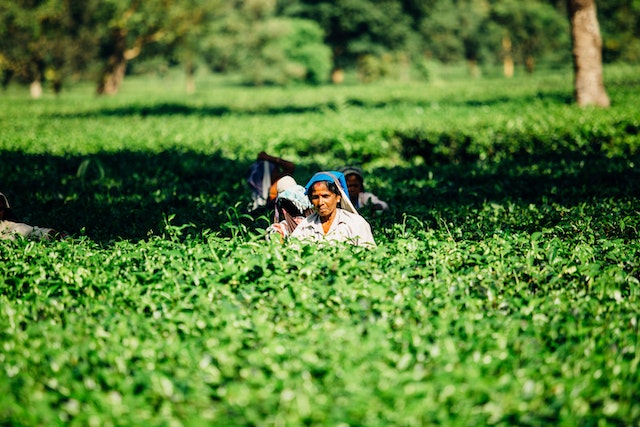


Sri Lanka went through major struggles in recent years, which took a direct hit on their economy.
Before COVID-19 it already had a declining economy and in 2023 it turns out it has grown worse. Sri
Lanka is going through its worst economic crisis in the past decade. High inflation rates and negative GDP
rates have cost Sri Lankans a great deal. The cost of living for the average citizen is very high as of now.
According to the data from the Asian Development Bank Sri Lanka has a -3.0% of GDP( Gross Domestic
Product) as of September 2023. Yet it has improved from the past year which had -7.1% of GDP.
Compared to other South Asian countries in 2023 Sri Lanka’s GDP fell very short compared to
Maldives, India, Bangladesh, Bhutan and Nepal. The inflation rate stands at a whopping 18.7% in
September 2023. The cost of food, utilities, and transportation has gone higher ever since, and today Sri
Lankans stand at a lost state to afford all these expenses with an average monthly income of just US
$200.
Sri Lanka was a country recovering from its 30-year-long civil war which ended in 2009 in the past
decade. Even before the Pandemic took over the country Sri Lankan economy was struggling. The
government appointed in 2019 cut back on all taxes that it cost the Sri Lankan government a $1.4
bn of annual revenue. Growth percentage had slowed down, Investment rates were going down and
there was huge amounts of debt to be paid.
In 2020 when the Pandemic hit Sri Lanka. The country closed down all exports and imports. It had a
major impact on Tourism. Which is a major income industry in Sri Lanka. Production and
Manufacturing industries were shutting down due to a lack of investments and resources. Most of the
resources were allocated towards the health system and towards the recovery process from Covid 19.
This led to the scarcity of primary resources and access to services. The people were struggling with their
day-to-day needs. One of the key symbols of the struggle was the long fuel lines seen across the country
everywhere. After 2 years of struggle with COVID-19, the country was again met with a major crisis
cause of the political instability of the central government.
Sri Lanka lost all access to its international financial markets in 2020. Sri Lanka had no income and was
heavily relying on official reserves in the country. From 2019 to 2022 official reserves dropped down
from US $7.6 billion to just $400 million. In 2022 Sri Lankan economy was contracted by 7.6%. Sri
The Lankan Rupee floated against the US dollar by 78% between March to May of 2022. The foreign assets
went down to US $-4.8 billion by December 2022.
The scarcity of essentials such as fuel, medicines, and food led to a major crisis and the people of Sri Lanka
protested for months on end to devote the current president. These events affected directly the
economy of Sri Lanka.

Midst all the protests of the common people and political disputes, Sri Lanka was finally able to
appoint a new president in place of the old one in July 2022. Sri Lanka has managed to improve its
situation since then and this has paved the way for improvement economically. The new government has
been making its connections with the IMF and other countries for debt restructuring. The IMF grant is
supposed to be permitted by the end of this year, with hopes it will shed light on the country’s
economy. According to the Asian Development Bank Sri Lanka’s GDP rate is supposed to rise up to
1.3% in 2024. The inflation rate forecast for 2024 is 5.5%. While this is still a low improvement. It has vastly improved compared to last year. Amidst all this, the Sri Lankan rupee was appreciated again in
2023 March. What Sri Lanka needs is a debt restructuring program to pay back all the unsustainable
debt it holds to the World Bank and China. The IMF board has agreed to a US $ 2.9 billion fund facility
program extending for over 48 months. The Sri Lankan government is bonded to the IMF and abides by its rules
and regulations.
For the past few years the Sri Lankan people has suffered due to many crisis situations. The working
class being the most affected. Due to loss of jobs and slowing down in processes like manufacturing
and production. Mostly they had to fall back to farming and other jobs to suffice. Socially and
economically the burden befallen on people the past years is very high. The growth and poverty
reduction percentage has slowed down immensely in the recent years. Poverty in Sri Lanka will stay
in 25% of the population for many years to come according to data.
Sri Lanka needs to regain its access to international markets, and improve its industries and service
sectors. Create more jobs common people, without letting unemployment grow at a rapid scale. Debt
restructuring is mandatory. Political stability also plays a key role here. The central government must
hold responsible solid for Sri Lanka’s economy to flourish.
Sri Lanka went through its worst economical downfall in the last decade. It needs to recover and match
up to the global context. The impact it had socially is massive, Sri Lanka needs to restore balance in its
economy by all means. So far the new governments steps to recovery, partnering up with international
funds and aid has given more hope to Sri Lankans. This will invite more investments towards the
country, increasing in capital. Hopefully this will restore the normal lifestyle of Sri Lankans.